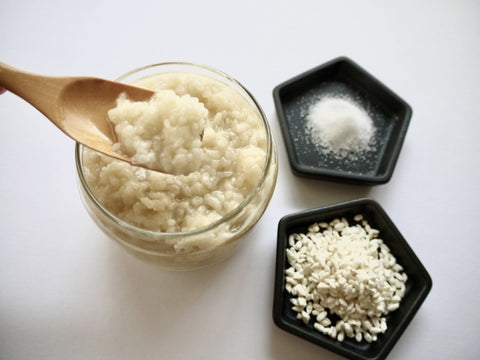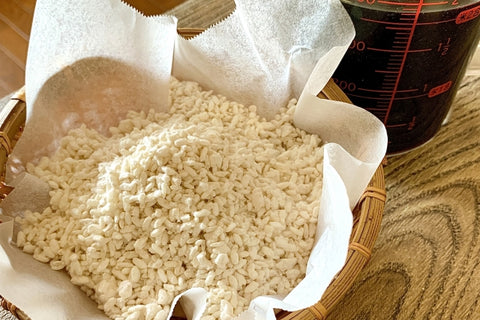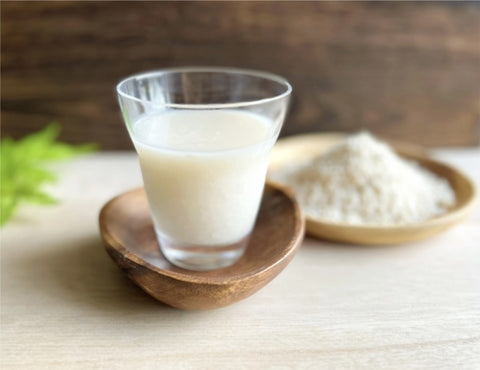
What is rice koji?
Hello everyone!
This is Yoneyama from Komedoriming.
Summer is gradually coming to an end and it's getting cooler.
This time, we will talk about rice koji, which is also used in our amazake.
What is Koji?

"Koji" is made by growing "Aspergillus oryzae" on grains such as rice, wheat, and soybeans, and is essential for making Japanese fermented foods. The type of koji that is made varies depending on the type of food (culture medium) in which the bacteria is grown, and different types are used depending on the fermented food being made.
·Malted rice
It is made by growing koji mold on steamed rice and is used to make sweet sake, Japanese sake, etc.
・Barley malt
It is made by growing koji mold on steamed barley, and is used in "barley miso" and "barley shochu," which are mainly made in the Kyushu, Chugoku, and Shikoku regions.
・Bean Koji
It is made by growing koji mold on steamed beans and is used in "mame miso" and "hatcho miso," which are mainly made in the Tokai region.
I had always thought that all miso was made from soybeans, so I was surprised to learn that rice, wheat, and beans are all made from different ingredients, and that the name of the miso changes depending on what is being handled!
This time, I will be sharing about rice koji!
Why is rice koji good for your health?

Rice koji is one of Japan's traditional fermented foods. When you hear the word "fermented foods," many people probably think of them as being "good for your health."
In fact, the koji mold used in rice koji is also called the "national mold" and is a mold designated by the government. Its enzymes have various functions.
・Promotes digestion and absorption
Enzymes promote the digestion and absorption of nutrients from food, allowing you to take in nutrients efficiently.
・Improvement of intestinal environment
Dietary fiber and oligosaccharides increase the number of good bacteria in the intestines and improve the intestinal environment. You can also expect an immune boosting effect.
・ Fatigue recovery effect
The glucose produced by the breakdown of starch and the abundant vitamins contained in the food help to relieve fatigue.
・ Skin beautifying effect
Vitamin B1, folic acid, and other B vitamins promote blood circulation and metabolism. You can expect beautiful skin effects.
Due to these effects, salt koji and amazake are used in many households, and recently they have become so familiar that there is even a term for them: "kinakatsu." It is no exaggeration to say that they are an essential part of the Japanese diet.
Recently, pickled vegetables made in the refrigerator have become popular. All you have to do is store the rice bran bed in the refrigerator and add chopped vegetables and fish, so I always have pickles stocked in my refrigerator!

I have always suffered from stomach pains due to poor intestinal health, and was recommended to drink amazake. Although it is good for the body, I have never really liked the taste of amazake.
To begin with, there are two types of amazake: "amazake made with sake lees" and "amazake made with rice koji." Most of the amazake sold at shrines is made with sake lees, which I have always disliked.
However, when I tried the rice koji amazake, it was a completely different kind of amazake and was delicious.
It had a natural sweetness to it, wasn't cloyingly sweet, and was delicious both hot and cold, so from then on I became hooked on amazake.
Since then, I have been drinking a glass (100-200ml) every day, and not only has my stomach pain improved, but people have also been telling me that my skin looks better, so I now look forward to drinking it every morning.
Why don't you try bacteria activity too?
"Kome Dreaming" is being broadcast through various media!
・Official LINE
https://www.instagram.com/giftmita/?hl=ja
【reference】